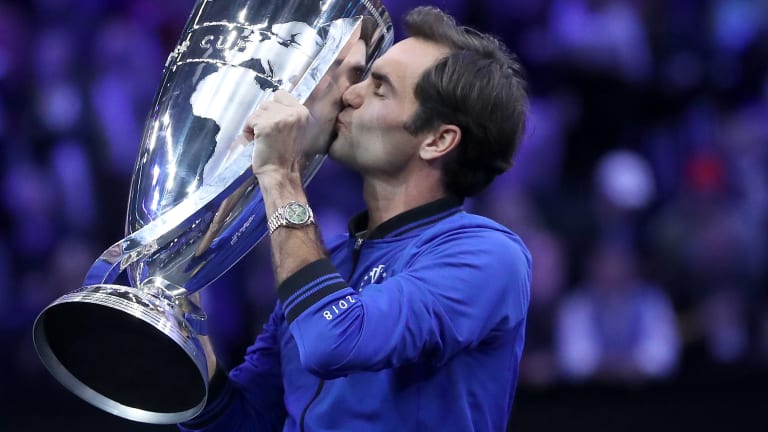Roger Federer's Laver Cup fixed tennis’ "get-it-done problem"
By Sep 16, 2019Nadal's farewell
'Your old friend is always cheering for you': Roger Federer pens letter to retiring Rafael Nadal
By Nov 19, 2024Nadal's farewell
22 Rafael Nadal quotes that sum up his fighting spirit and unique sense of humor
By Nov 18, 2024Social
Taylor Swift snaps selfies with Frances Tiafoe, Ayan Broomfield at Chiefs game
By Nov 11, 2024Social
Roger Federer hails Dominic Thiem's 'thunderous backhand' in retirement tribute
By Oct 23, 2024What's the one that got away from Roger Federer?
By Oct 16, 2024What's the one that got away from Rafael Nadal?
By Oct 14, 2024Rafa to retire
Roger Federer, Novak Djokovic pay tribute to retiring Nadal: “Your legacy will live forever”
By Oct 11, 2024Social
Social Reaction: Rafael Nadal’s peers and rivals 'reject' his application to retire
By Oct 10, 2024Your Game
Racquet Review: Wilson RF 01 Pro, made in tandem with Roger Federer
By Oct 05, 2024Roger Federer's Laver Cup fixed tennis’ "get-it-done problem"
Laver Cup has been a hit. What can tennis learn from it?
Published Sep 16, 2019
Advertising

Roger Federer's Laver Cup fixed tennis’ "get-it-done problem"
© 2018 Getty Images
Advertising

Roger Federer's Laver Cup fixed tennis’ "get-it-done problem"